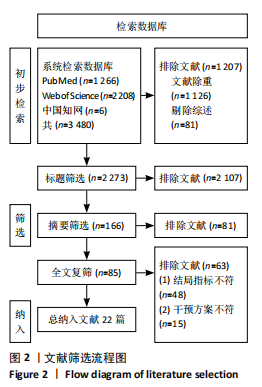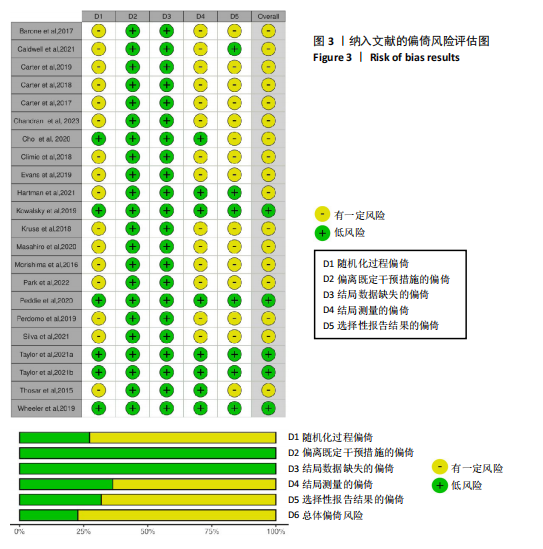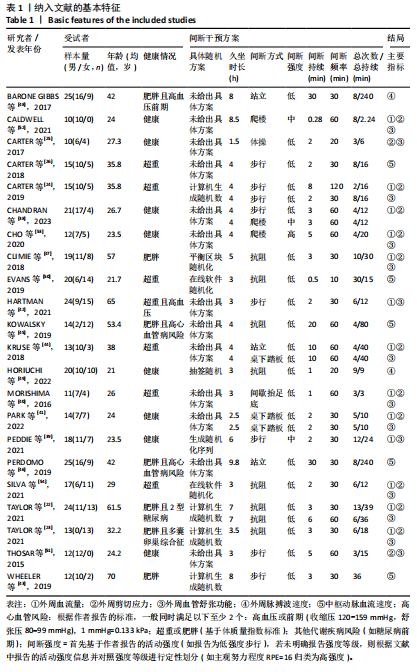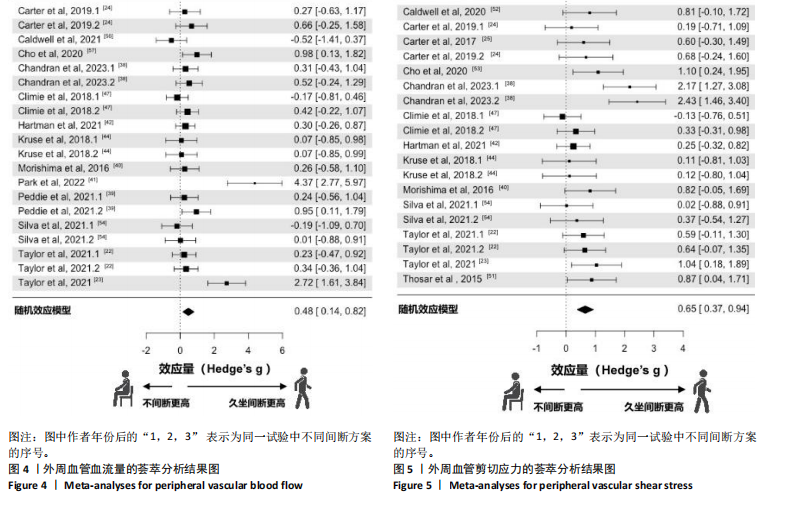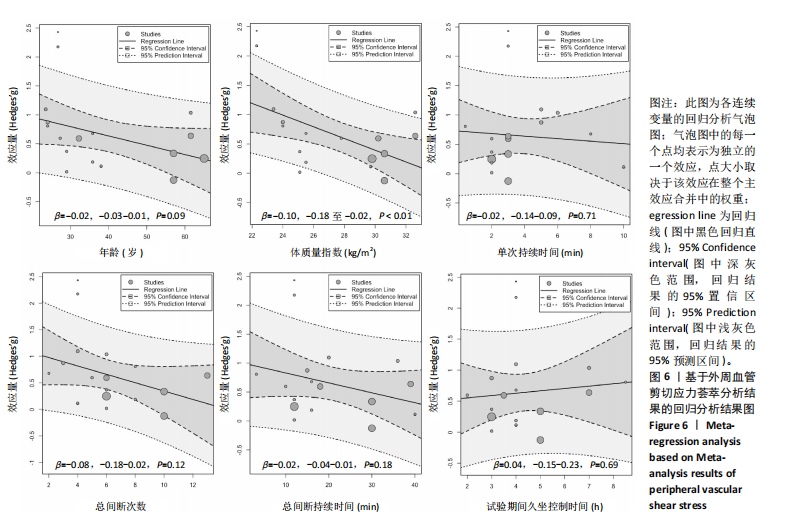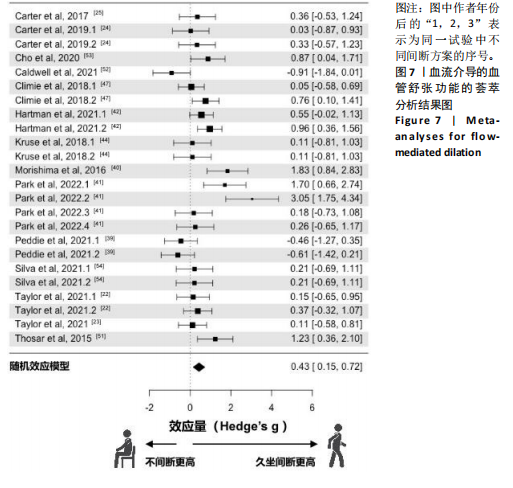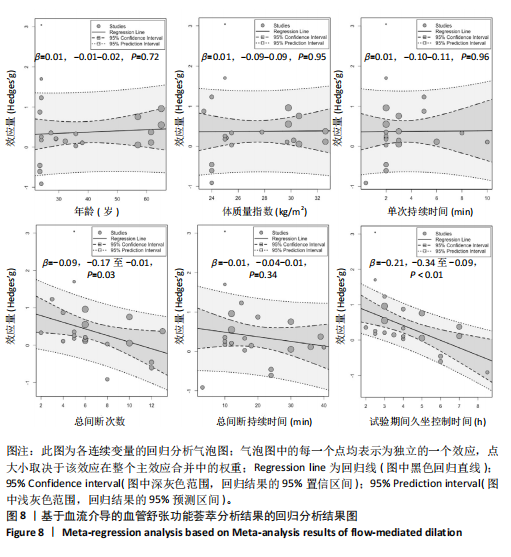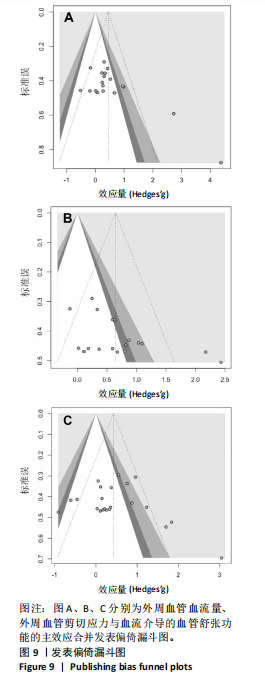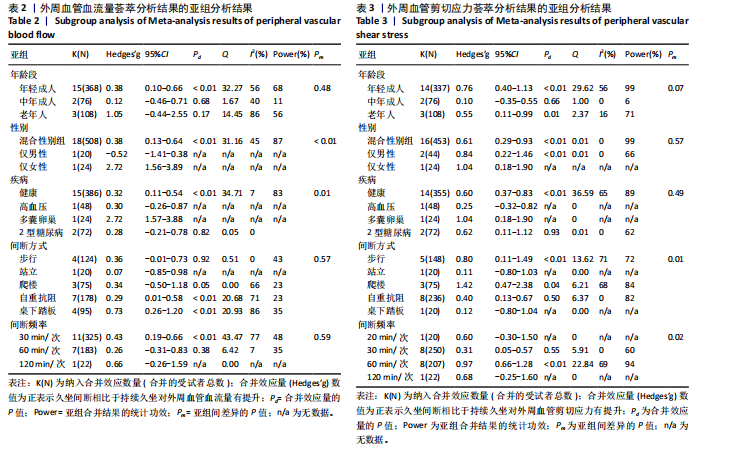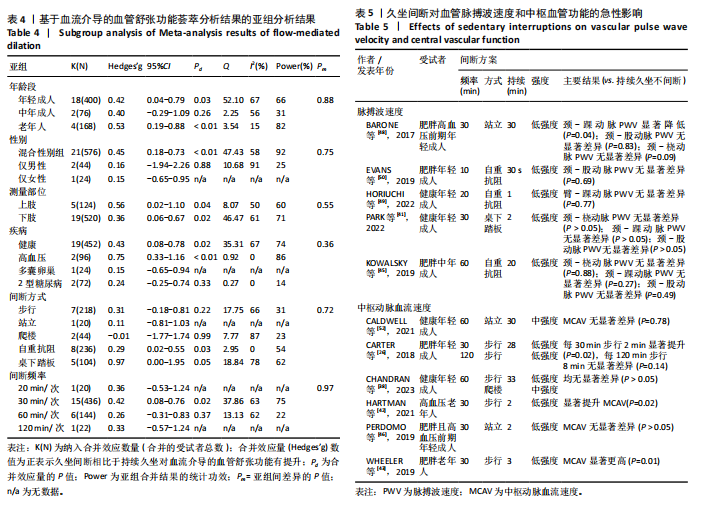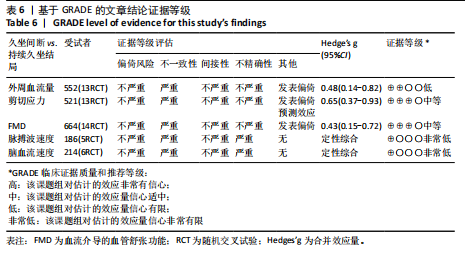[7]
GREEN DJ, JONES H, THIJSSEN D, et al. Flow-mediated dilation and cardiovascular event prediction: does nitric oxide matter? Hypertension. 2011;57(3):363-369.
[8] INABA Y, CHEN JA, BERGMANN SR. Prediction of future cardiovascular outcomes by flow-mediated vasodilatation of brachial artery: a meta-analysis. Int J Cardiovasc Imaging. 2010;26(6):631-640.
[9] PINTO AJ, BERGOUIGNAN A, DEMPSEY PC, et al. Physiology of sedentary behavior. Physiol Rev. 2023;103(4):2561-2622.
[10] PATERSON C, FRYER S, ZIEFF G, et al. The effects of acute exposure to prolonged sitting, with and without interruption, on vascular function among adults: a meta-analysis. Sports Med. 2020;50(11):1929-1942.
[11] WONG ND, SATTAR N. Cardiovascular risk in diabetes mellitus: epidemiology, assessment and prevention. Nat Rev Cardiol. 2023;20(10):685-695.
[12] PADILLA J, FADEL PJ. Prolonged sitting leg vasculopathy: contributing factors and clinical implications. Am J Physiol Heart Circ Physiol. 2017;313(4):H722-H728.
[13] 顾东风,翁建平,鲁向锋.中国健康生活方式预防心血管代谢疾病指南[J].中国循环杂志,2020,35(3):209-230.
[14] ZHENG C, ZHANG X, SHERIDAN S, et al. Effect of sedentary behavior interventions on vascular function in adults: a systematic review and meta-analysis. Scand J Med Sci Sports. 2021;31(7):1395-1410.
[15] SOTO-RODRÍGUEZ FJ, CABAÑAS EI, PÉREZ-MÁRMOL JM. Impact of prolonged sitting interruption strategies on shear rate, flow-mediated dilation and blood flow in adults: a systematic review and meta-analysis of randomized cross-over trials. J Sports Sci. 2022;40(14):1558-1567.
[16] TAYLOR FC, PINTO AJ, MANIAR N, et al. The acute effects of prolonged uninterrupted sitting on vascular function: a systematic review and meta-analysis. Med Sci Sports Exerc. 2022;54(1):67-76.
[17] 祝莉,王正珍,朱为模.健康中国视域中的运动处方库构建[J].体育科学,2020, 40(1):4-15.
[18] 卢文云,陈佩杰.全民健身与全民健康深度融合的内涵、路径与体制机制研究[J].体育科学,2018,38(5):25-39, 55.
[19] 健康中国行动(2019-2030年):总体要求、重大行动及主要指标[J].中国循环杂志, 2019,34(9):846-858.
[20] PAGE MJ, MCKENZIE JE, BOSSUYT PM, et al. The PRISMA 2020 statement: an updated guideline for reporting systematic reviews. BMJ. 2021;29;372:n71.
[21] CUMPSTON M, LI T, PAGE MJ, et al. Updated guidance for trusted systematic reviews: a new edition of the cochrane handbook for systematic reviews of interventions. Cochrane Database Syst Rev. 2019;10:ED000142.
[22] TAYLOR FC, DUNSTAN DW, HOMER AR, et al. Acute effects of interrupting prolonged sitting on vascular function in type 2 diabetes. Am J Physiol Heart Circ Physiol. 2021;320(1):H393-h403.
[23] TAYLOR FC, DUNSTAN DW, FLETCHER E, et al. Interrupting prolonged sitting and endothelial function in polycystic ovary syndrome. Med Sci Sports Exerc. 2021;53(3):479-486.
[24] CARTER SE, DRAIJER R, HOLDER SM, et al. Effect of different walking break strategies on superficial femoral artery endothelial function. Physiol Rep. 2019;7(16):e14190.
[25] CARTER SE, GLADWELL VF. Effect of breaking up sedentary time with callisthenics on endothelial function. J Sports Sci. 2017; 35(15):1508-1514.
[26] CARTER SE, DRAIJER R, HOLDER SM, et al. Regular walking breaks prevent the decline in cerebral blood flow associated with prolonged sitting. J Appl Physiol (1985). 2018;125(3):790-798.
[27] HIGGINS JPT, ALTMAN DG, GØTZSCHE PC, et al. The Cochrane Collaboration’s tool for assessing risk of bias in randomised trials. BMJ. 2011;343:d5928.
[28] DERSIMONIAN R, LAIRD N. Meta-analysis in clinical trials. Controlled Clinical Trials. 1986;7(3):177-188.
[29] NAGASHIMA K, NOMA H, FURUKAWA TA. Prediction intervals for random-effects meta-analysis: a confidence distribution approach. Stat Methods Med Res. 2019; 28(6):1689-1702.
[30] COHEN J. Statistical power analysis for the behavioral sciences. 2nd edition. New York: Routledge, USA. 1988.
[31] ABT G, BOREHAM C, DAVISON G, et al. Power, precision, and sample size estimation in sport and exercise science research. J Sports Sci. 2020;38(17):1933-1935.
[32] NAKAGAWA S, NOBLE DWA, SENIOR AM, et al. Meta-evaluation of meta-analysis: ten appraisal questions for biologists. BMC Biol. 2017;15(1):18.
[33] BINNEY ZO, MANSOURNIA MA. Methods matter: (mostly) avoid categorising continuous data - a practical guide. Br J Sports Med. 2024;58(5):241-243.
[34] RICO-GONZÁLEZ M, PINO-ORTEGA J, CLEMENTE F, et al. Guidelines for performing systematic reviews in sports science. Biol Sport. 2022;39(2):463-471.
[35] PETERS JL, SUTTON AJ, JONES DR, et al. Contour-enhanced meta-analysis funnel plots help distinguish publication bias from other causes of asymmetry. J Clin Epidemiol. 2008;61(10):991-996.
[36] EGGER M, DAVEY SMITH G, SCHNEIDER M, et al. Bias in meta-analysis detected by a simple, graphical test. BMJ. 1997; 315(7109):629-634.
[37] GUYATT GH, OXMAN AD, VIST GE, et al. GRADE: an emerging consensus on rating quality of evidence and strength of recommendations. BMJ. 2008;336(7650): 924-926.
[38] CHANDRAN O, SHRUTHI P, SUKUMAR S, et al. Effects of physical activity breaks during prolonged sitting on vascular and executive function-A randomised cross-over trial. J Taibah Univ Med Sci. 2023;18(5):1065-1075.
[39] PEDDIE MC, KESSELL C, BERGEN T, et al. The effects of prolonged sitting, prolonged standing, and activity breaks on vascular function, and postprandial glucose and insulin responses: a randomised crossover trial. PLoS One. 2021;16(1):e0244841.
[40] MORISHIMA T, RESTAINO RM, WALSH LK, et al. Prolonged sitting-induced leg endothelial dysfunction is prevented by fidgeting. Am J Physiol Heart Circ Physiol. 2016;311(1):H177-182.
[41] PARK SY, WOODEN TK, PEKAS EJ, et al. Effects of passive and active leg movements to interrupt sitting in mild hypercapnia on cardiovascular function in healthy adults. J Appl Physiol (1985). 2022;132(3):874-887.
[42] HARTMAN YAW, TILLMANS LCM, BENSCHOP DL, et al. Long-term and acute benefits of reduced sitting on vascular flow and function. Med Sci Sports Exerc. 2021;53(2):341-350.
[43] WHEELER MJ, DUNSTAN DW, SMITH B, et al. Morning exercise mitigates the impact of prolonged sitting on cerebral blood flow in older adults. J Appl Physiol (1985). 2019;126(4):1049-1055.
[44] KRUSE NT, HUGHES WE, BENZO RM, et al. Workplace strategies to prevent sitting-induced endothelial dysfunction. Med Sci Sports Exerc. 2018;50(4):801-808.
[45] KOWALSKY RJ, JAKICIC JM, HERGENROEDER A, et al. Acute cardiometabolic effects of interrupting sitting with resistance exercise breaks. Appl Physiol Nutr Metab. 2019;44(10):1025-1032.
[46] PERDOMO SJ, GIBBS BB, KOWALSKY RJ, et al. Effects of alternating standing and sitting compared to prolonged sitting on cerebrovascular hemodynamics. Sport Sci Health. 2019;15(2):375-383.
[47] CLIMIE RE, WHEELER MJ, GRACE M, et al. Simple intermittent resistance activity mitigates the detrimental effect of prolonged unbroken sitting on arterial function in overweight and obese adults. J Appl Physiol (1985). 2018;125(6):1787-1794.
[48] BARONE GIBBS B, KOWALSKY RJ, PERDOMO SJ, et al. Effect of alternating standing and sitting on blood pressure and pulse wave velocity during a simulated workday in adults with overweight/obesity. J Hypertens. 2017;35(12):2411-2418.
[49] HORIUCHI M, STONER L. Macrovascular and microvascular responses to prolonged sitting with and without bodyweight exercise interruptions: a randomized cross-over trial. Vasc Med. 2022;27(2):127-135.
[50] EVANS WS, STONER L, WILLEY Q, et al. Local exercise does not prevent the aortic stiffening response to acute prolonged sitting: a randomized crossover trial. J Appl Physiol (1985). 2019;127(3):781-787.
[51] THOSAR SS, BIELKO SL, MATHER KJ, et al. Effect of prolonged sitting and breaks in sitting time on endothelial function. Med Sci Sports Exerc. 2015;47(4):843-849.
[52] CALDWELL HG, COOMBS GB, RAFIEI H, et al. Hourly staircase sprinting exercise “snacks” improve femoral artery shear patterns but not flow-mediated dilation or cerebrovascular regulation: a pilot study. Appl Physiol Nutr Metab. 2021;46(5): 521-529.
[53] CHO MJ, BUNSAWAT K, KIM HJ, et al. The acute effects of interrupting prolonged sitting with stair climbing on vascular and metabolic function after a high-fat meal. Eur J Appl Physiol. 2020;120(4):829-839.
[54] SILVA GO, CARVALHO JF, KANEGUSUKU H, et al. Acute effects of breaking up sitting time with isometric exercise on cardiovascular health: randomized crossover trial. Scand J Med Sci Sports. 2021;31(11):2044-2054.
[55] PATERSON C, STONE K, TURNER L, et al. The effect of cardiorespiratory fitness and habitual physical activity on cardiovascular responses to 2-hours of uninterrupted sitting. J Appl Physiol (1985). 2024;136(5):1087-1096.
[56] AHMED B, SULTANA R, GREENE MW. Adipose tissue and insulin resistance in obese. Biomed Pharmacother. 2021;137: 111315.
[57] MUNIYAPPA R, SOWERS JR. Role of insulin resistance in endothelial dysfunction. Rev Endocr Metab Disord. 2013;14(1):5-12.
[58] CREDEUR DP, MILLER SM, JONES R, et al. Impact of prolonged sitting on peripheral and central vascular health. Am J Cardiol. 2019;123(2):260-266.
[59] GERMANO-SOARES AH, ANDRADE-LIMA A, MENÊSES AL, et al. Association of time spent in physical activities and sedentary behaviors with carotid-femoral pulse wave velocity: a systematic review and meta-analysis. Atherosclerosis. 2018;269:211-218.
[60] VLACHOPOULOS C, AZNAOURIDIS K, STEFANADIS C. Prediction of cardiovascular events and all-cause mortality with arterial stiffness: a systematic review and meta-analysis. J Am Coll Cardiol. 2010;55(13): 1318-1327.
[61] WILLIE CK, TZENG YC, FISHER JA, et al. Integrative regulation of human brain blood flow. J Physiol, 2014;592(5):841-859.
[62] KEAGE HAD, CHURCHES OF, KOHLER M, et al. Cerebrovascular function in aging and dementia: a systematic review of transcranial Doppler studies. Dement Geriatr Cogn Dis Extra. 2012;2(1):258-270.
[63] CARTER S, HARTMAN Y, HOLDER S, et al. Sedentary behavior and cardiovascular disease risk: mediating mechanisms. Exerc Sport Sci Rev. 2017;45(2):80-86.
[64] FERREIRA-SANTOS L, MARTINEZ-LEMUS L A, PADILLA J. Sitting leg vasculopathy: potential adaptations beyond the endothelium. Am J Physiol Heart Circ Physiol. 2024;326(3): H760-H771.
[65] PEKAS EJ, ALLEN MF, PARK SY. Prolonged sitting and peripheral vascular function: potential mechanisms and methodological considerations. J Appl Physiol (1985). 2023; 134(4):810-822.
[66] WALSH LK, RESTAINO RM, MARTINEZ-LEMUS LA, et al. Prolonged leg bending impairs endothelial function in the popliteal artery. Physiol Rep. 2017;5(20):e13478.
[67] OGOH S, AINSLIE PN. Cerebral blood flow during exercise: mechanisms of regulation. J Appl Physiol (1985). 2009;107(5): 1370-1380.
[68] SEIFERT T, FISHER JP, YOUNG C N, et al. Glycopyrrolate abolishes the exercise-induced increase in cerebral perfusion in humans. Exp Physiol. 2010;95(10):1016-1025.
[69] CHARAKIDA M, MASI S, LÜSCHER TF, et al. Assessment of atherosclerosis: the role of flow-mediated dilatation. Eur Heart J. 2010;31(23):2854-2861.
[70] HILL JM, ZALOS G, HALCOX JPJ, et al. Circulating endothelial progenitor cells, vascular function, and cardiovascular risk. N Engl J Med. 2003;348(7):593-600.
[71] ROGERS EM, BANKS NF, TRACHTA ER, et al. Acceptability of performing resistance exercise breaks in the workplace to break up prolonged sedentary time: a randomized control trial in U.S. office workers and students. Workplace Health Saf. 2024;72(6):234-243.
[72] 殷明越,陈志力,李汉森,等. 碎片化运动:兼具应用可行性与健康促进效果的新策略[J]. 西安体育学院学报,2023,40(5): 615-627.
[73] ISLAM H, GIBALA M J, LITTLE J P. Exercise snacks: a novel strategy to improve cardiometabolic health. Exerc Sport Sci Rev. 2022;50(1):31-37.
[74] JONES MD, CLIFFORD BK, STAMATAKIS E, et al. Exercise snacks and other forms of intermittent physical activity for improving health in adults and older adults: a scoping review of epidemiological, experimental and qualitative studies. Sports Med. 2024; 54(4):813-835.
[75] YIN M, DENG S, CHEN Z, et al. Exercise snacks are a time-efficient alternative to moderate-intensity continuous training for improving cardiorespiratory fitness but not maximal fat oxidation in inactive adults: a randomized controlled trial. Appl Physiol Nutr Metab. 2024;49(7):920-932.
[76] LITTLE JP, LANGLEY J, LEE M, et al. Sprint exercise snacks: a novel approach to increase aerobic fitness. Eur J Appl Physiol. 2019;119(5):1203-1212.
[77] AHMADI MN, CLARE PJ, KATZMARZYK PT, et al. Vigorous physical activity, incident heart disease, and cancer: how little is enough? Eur Heart J. 2022;43(46):4801-4814.
[78] AHMADI MN, HAMER M, GILL JMR, et al. Brief bouts of device-measured intermittent lifestyle physical activity and its association with major adverse cardiovascular events and mortality in people who do not exercise: a prospective cohort study. Lancet Public Health. 2023;8(10):e800-e810.
[79] STAMATAKIS E, AHMADI MN, GILL JMR, et al. Association of wearable device-measured vigorous intermittent lifestyle physical activity with mortality. Nat Med. 2022;28(12):2521-2529.
